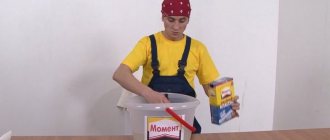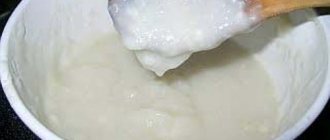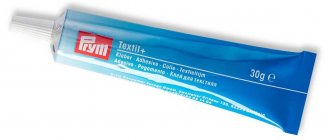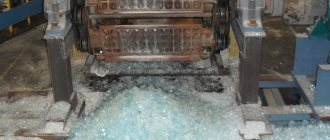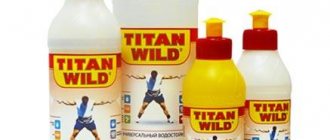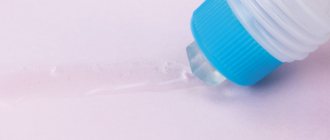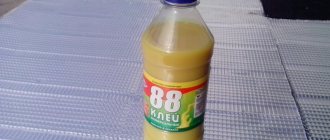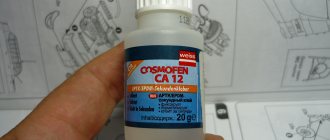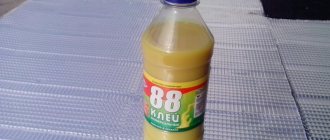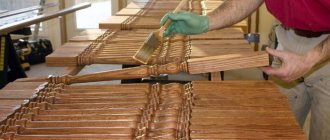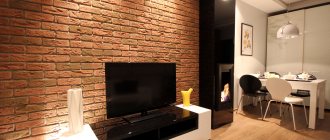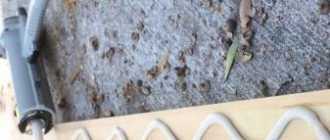Wallpapering is a special type of work that requires attention, since the appearance of the rooms depends on the quality of the work. Using Methylane glue for repairs, you don’t have to worry about the quality of fixation or difficulties. It’s easy to work with this glue; you don’t need any special knowledge. The adhesive is available for various types of wallpaper. Before work, you just need to read the instructions for use.
Composition of Methylane glue
Methylane wallpaper glue is sold in granular form in hermetically sealed packages. Mixture composition:
- methylcellulose or modified starch;
- effect enhancing components;
- antifungal additives.
The version with methylcellulose is distinguished by an increased price, a greater degree of strength, absence of odor, and resistance to temperature changes. Correction of joints is allowed in the first 15 minutes. It is Methylane adhesive for non-woven wallpaper made of methylcellulose that is suitable for treating cemented, limestone surfaces (walls).
A technical feature is a color indicator, which controls the uniformity of the applied layer on both canvases and walls.
Metylan Brand Review
Methylane is a Henkel product released in 1953. The released wallpaper glue took a leading position. He simplified wallpapering so that you don't need any special skills to do it. The Metylan brand now produces a whole series for preparing walls and wallpapering itself.
This brand appeared in Russia in 2001 and immediately won the prize as the best modern product in construction.
All products are manufactured in Germany. Innovations are being developed there and the quality of formulations is improving.
Range
Depending on the additional components of the composition, the product is used for paper wallpaper, non-woven, vinyl, fiberglass, and coatings for painting. The mixture itself is selected based on operational requirements.
- “Methylane interlining express premium” or “ultra interlining” is best for working with non-woven fabrics (non-woven material made from cellulose fibers).
- “Methylane Granulate Premium” is the best choice for pasting heavy and exclusive options; as an alternative, “Methylane Ovalite T”, produced in a liquid consistency, can be used.
- “Universal Premium” is the best for paper coverings.
- "Methylane glass fiber premium" is designed specifically for the requirements of fiberglass.
- “Vinyl Premium” reliably adheres heavy vinyl wallpaper to walls and provides reliable, long-lasting results.
Types and packaging of Methylane
Anyone can use universal glue. Types of mixtures for heavy, exclusive coatings require maximum accuracy and precision in work. If you are planning a small repair, you need to glue some areas, it is better to use a joint product from the same manufacturer.
Composition and properties of various varieties
As stated, the basis of Methylane is modified starch. But due to the additives that the manufacturer includes in the glue, this product can be applied to the following types of wallpaper:
- vinyl;
- non-woven;
- glass wallpaper;
- paper;
- heavy structured.
In this regard, the manufacturer produces several types of Methylane, each of which is used for gluing specific wallpaper.
Non-woven express premium
This type of Methylane is used for gluing non-woven wallpaper. An important feature of this type of material is that the diluted powder can be applied directly to the walls.
See also
How to glue a suspended ceiling after a cut with your own hands, methods and step-by-step instructions
Non-woven ultra
This wallpaper glue is used for the same purposes as the previous one. The difference between the materials is that Ultra non-woven fabric hardens faster.
Premium granulate
Premium granulate is available in the form of granules, which must also be diluted before application. This type of Methylane is used for gluing heavy wallpaper: coarse-fiber, metallized and others. Premium granulate, thanks to the special shape of the particles, is easier to dose, thereby reducing material consumption.
Premium station wagon
Universal adhesive suitable for all types of wallpaper. This type of Methylane has a paste-like consistency, which facilitates the process of applying the material to the base. Premium station wagon, when opened, can be stored for a long time.
Premium fiberglass
This type of Methylane is used for glass wallpaper and other types of finishing materials. The adhesive is also used in rooms with high humidity. After drying, the composition can withstand repeated painting of the surface. This type of methylane sticks wallpaper, even to cement or lime.
Vinyl premium
Methylane for vinyl wallpaper is available in powder form and is characterized by the same properties as other specialized types of glue.
For joints
A specialized variety of Methylane, created for gluing peeled wallpaper and fixing joints. This composition has the following features:
- Suitable for gluing vinyl and plastic;
- tolerates exposure to elevated temperatures, which is why it is used for gluing wallpaper behind radiators;
- Available in compact 60 gram packaging.
Methylane for joints comes with a spatula, with which you can evenly apply the glue even in hard-to-reach places.
Advantages
In addition to a convenient color indicator, the product has a number of other technical advantages:
- economy of consumption;
- ease of preparing a solution without clots;
- can mask small cracks and seams on walls;
- no odor or toxins;
- there are clear instructions for all types of coatings;
- no risk of stains or streaks (after drying the mixture becomes transparent);
- durability of the result;
- The solution can be used within a few minutes after preparation;
- the glued strips still slide at first, which means you can adjust the joints;
- increased adhesion of the product ensures high-quality results when gluing heavy canvases even on horizontal surfaces (ceiling);
- allowed for surfaces without prior putty;
- good adhesion is accompanied by the ability to adjust the joints and position of the canvases (during the first 10-15 minutes after gluing);
- characteristics are maintained when working with cement.
The available range allows you to choose an individual option for any requirement.
Advantages and disadvantages
Methylane, in comparison with other adhesives used for wallpaper, has the following positive features:
- efficiency;
- no lumps appear when preparing the solution;
- does not emit odor and does not contain toxic substances;
- does not leave stains or streaks;
- provides durable fixation of wallpaper to various surfaces;
- the solution is stored unopened for 10 days;
- you can adjust the joints after gluing;
- provides reliable adhesion of heavy wallpaper, including on the ceiling;
- Suitable for gluing to plaster.
The disadvantage of Methylane is that it is overpriced. When applied to the wall, the glue dries quickly, and therefore it is necessary to immediately adjust the position of the wallpaper. In addition, once purchased, Methylane must be used within two years, while other similar products can be used after five years.
See also
Properties and purpose of Litokol glue, review of popular brands and how to use
How and with what to breed
Clear proportions for mixing granulated powder with water are indicated on the packaging of the product. You need to dilute the glue by gradually pouring it into cold water while stirring (intensely, without interruption). When the mass becomes homogeneous, let it stand for 15-20 minutes and mix again. Unused finished glue can be stored in an airtight container for no more than 10 days from the date of preparation, unless otherwise indicated in the instructions.
It is best to apply the product to the walls with a roller; excess on the wallpaper can be removed with a clean, damp sponge. If canvases for painting are used, then it can be applied no earlier than one day after completion of work.
The ratio of dry matter and water depends on the technical properties and type of wallpaper.
- For example, for ordinary paper coverings with a universal (or premium vinyl) agent, the concentration should be 1:30, and for vinyl and non-woven coverings with a flat base - 1:20.
- If “Non-woven ultra” or “Express Premium” is used for non-woven wallpaper with deep relief, then the part of the water should be even less - 1:18.
- When working with fiberglass, part of the glue should be diluted with eight parts of water.
If a liquid concentrate is used instead of a dry or granular powder, then for paper wallpaper it is diluted with water in a ratio of 1:10, for glass wallpaper - 1:6, and for heavy non-woven wallpaper - 1:8.
How to glue correctly
Remnants of old coatings, dust and moisture need to be removed from the walls. It is better if the surfaces are treated with a primer before repairing. Applying the adhesive composition to the walls or the roll itself depends on the requirements of the instructions (special icon with a brush).
It is better to apply it to the walls with a roller. The width of the layer should be slightly larger than the size of the roll so that the edges adhere well. The thickness of the applied solution should be about 2 mm. In this case, the glued sheet can be moved or aligned. If you need to cover wallpaper with the product, apply it with a brush in an even layer and fold it inward. The absorption period of the glue is indicated in the instructions for use and the time itself must be observed.
In order for the stripes to run smoothly, the first one must be glued along a pre-drawn vertical line, while simultaneously smoothing out the internal bubbles. The length of the strip should be 5 cm greater than the height of the wall, and the excess (after leveling) is cut off both at the top and bottom. After the final strip alignment, you can begin processing the next one. It is better to remove excess glue with a soft cloth or sponge.
Read more: how to hang wallpaper yourself
Gluing technology
The stirring process is important when preparing the adhesive solution. How well it is mixed depends on the quality of the gluing.
All surfaces are carefully prepared:
- The old covering is removed - wallpaper, paint, plaster, etc.
- If there are visible defects, they must be eliminated.
- If you run your hand over the surface and particles of dust or plaster remain on it, then you must first treat the coating with diluted wallpaper glue.
- A roller is used to distribute the glue on the wall and ceiling.
- If the mass is applied to wallpaper, then the canvas is laid on a flat surface (floor, table) face down, and the product is distributed.
- The strip is pressed and leveled with a roller or rag.
- Excess is removed with a damp washcloth.
Cleo, as an alternative to Methylane
The composition of the Cleo mixture allows you to update the interior, protecting the walls from mold. The product can be used when working with non-woven, vinyl, textile wallpaper, and fiberglass coatings.
The product only needs to be applied to the walls, which allows you to join the pattern more correctly and clearly and level the canvases themselves before the coating dries.
If you use Cleo to cover the walls with high-quality non-woven wallpaper, they will not be deformed, and during repeated repairs, it will be possible to remove only the top layer, maintaining the evenness of the base.
To prepare the mixture, you need to take water in a bucket, pour the adhesive mixture into it, and after 5 minutes, thoroughly stir everything until smooth. After covering, a strip of wallpaper is glued to the wall. To smooth and remove internal air, it is better to use a soft, dry cloth. Excess is removed with a damp, clean sponge. Each strip is glued end to end with the previous one.
If canvases have been selected for painting, then this stage can be started within two hours after completion of the process. The cost of the Cleo adhesive composition is higher than Methylane. But the quality and reliability of the result, provided it is easy to use, is more expensive.
